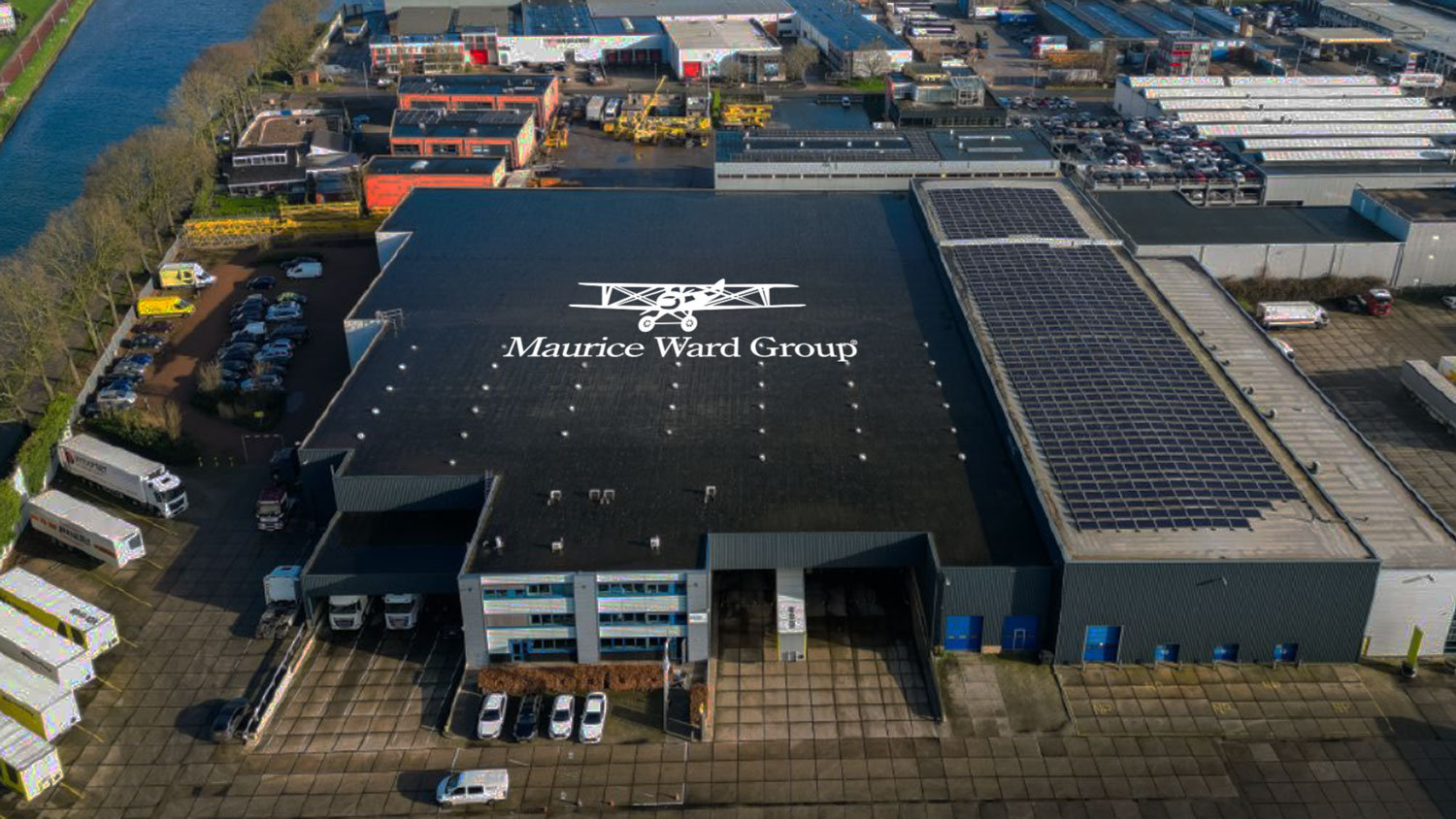New Warehouse in Holland – Now Open for Business
The Maurice Ward Group is once again growing its physical footprint in Europe with the addition of a new warehouse in a strategically important location.
Express Road Shipments: When every minute counts, you can count on us! Start tour >
January 13, 2022
Robotic solutions will be more dominant in the warehousing and delivery sectors. Recently, robots started taking over inventory activities with their automated systems to pick, move, and organize packages. Furthermore, autonomous trucks are expected to begin working in the near future, along with delivery drones. Automated air delivery showed high efficiency in the last couple of years, supporting the healthcare field during the pandemic. Since then, it has been under the spotlight to become a prominent player in the supply chain industry.
According to a recent analysis by Frost and Sullivan, “The automated guided vehicles (AGV) segment is forecast to hit $4.6 billion while the autonomous mobile robot (AMR) segment is expected to reach $6.8 billion.”
Artificial intelligence plays a critical role in this field to control robotic behavior and optimize it by advanced calculations, like finding the best route or predicting potential failures. The AI role extends to support intelligent naval and air navigation systems as well as risk assessment simulators. Logistics companies will be demanding more technology-aided solutions to save costs and avoid sudden trouble.
The COVID-19 pandemic and the worldwide lockdowns affected business badly, and since then, more companies have been implementing digital collaboration solutions to replace traditional communication methods.
“Amid the COVID-19 crisis, the global market for Digital Transformation Spending in Logistics estimated at US$45.6 Billion in the year 2020, is projected to reach a revised size of US$75.5 Billion by 2026, growing at a CAGR of 8.8% over the analysis period”, according to Report Linker.
Logistics companies rapidly evolve and adapt agile cloud-based platforms to organize their daily interactions. These solutions provide a unified online hub to connect service providers, clients, and 3rd party contractors from different parts of the world. It helps archive their conversations and documents them over the cloud to be accessed anywhere and anytime.
Until recently, supplier relationship management (SRM) was not widespread, but more companies started to consider the importance of building a long-term mutual-benefit relationship with suppliers and service providers. Research done by Mckinsey&Company showed that “Companies with advanced supplier-collaboration capabilities tend to outperform their peers.”
SRM helps reduce the consequences of sudden changes and emergencies. Building a good relationship with suppliers heavily affected the logistics industry. Nowadays, many businesses are trying to keep an updated database of trusted logistic service providers to be more flexible in critical situations. The interest in SRM software is predicted to keep growing throughout 2022.
The interest in achieving sustainability will keep rising in 2022 since sustainable supply chain logistics have been under the microscope for multiple years so far. More logistics companies are adopting eco-friendly solutions and green technologies to achieve a balance between financial growth and environmental care.
Relying on information technology tools helped shorten the driving time, thus reducing CO2 emissions. Simultaneously, electric delivery trucks and vehicles started taking over the place of the old fossil-fuel-operated ones. Countries also support this endeavor by pushing companies to implement more sustainable solutions. For instance, the plastic packaging tax issued in the EU. “Tax will be calculated on the weight of non-recycled plastic packaging waste at 0.80 euro per kg, with a mechanism to avoid some countries paying much more than others”, explains Reuters.
Online shopping has taken over the world, and this has brought many challenges to logistics companies as the need for cheap and fast delivery boosted dramatically. Many retail e-commerce models offer free or discounted shipping, which puts a lot of pressure on logistic service providers. The problem of last-mile delivery is the cost of delivering packages to the end consumer, and it acquires the most significant share of the shipping cost, whether the consumer is in a rural area that would take 2-3 miles of driving or in the city center where traffic jams will cause delays and waste resources.
The global Last-Mile Delivery Market was valued at USD 18.7 Bn in 2020, and it is expected to reach USD 62.7 Bn by 2027, with a CAGR of 18.9%, during the forecast period 2021-2027., from buying groceries to ordering cars, states All The Research.
Solving the last-mile delivery started and is expected to keep growing as we enter 2022 as long as retail e-commerce is in the lead. In the long term, the costs of establishing more warehouses eliminate delivery time and reduce costs and use multiple other methods that we have already talked about, like advanced delivery methods, green technologies, and AI computation. These solutions will be in more demand as the world is shifting towards online stores for everyday shopping, from buying groceries to ordering cars.
In the logistics industry we constantly seek faster and cost-efficient solutions to keep our clients satisfied. Investing in modern trends and new technologies is critical to improve supply chain services towards operational excellence. If you are looking for a trusted logistics partner with hands-on and most recent trends, reach out to us for more details about our services and routes.
The first ever ‘cargo only’ flight was recorded in November 1910 in the USA, using a Wright Model B aeroplane that flew 65 miles carrying a package of silk. The business owner used the pioneering transport more as a PR stunt to celebrate the opening of his store, with the bundle of silk cut into individual pieces and glued onto souvenir postcards.

The Maurice Ward Group is once again growing its physical footprint in Europe with the addition of a new warehouse in a strategically important location.

Maurice Ward Croatia is starting an exciting new phase with Matija Sajko as the newly appointed Branch Manager. As a total logistics services provider, this branch offers End-to-End logistics solutions, from the smallest packages to bulk movements, every shipment handled with care.

On October 4th, Maurice Ward France proudly inaugurated its new headquarters, located in Genas near Lyon airport. This is a significant milestone in the company’s journey and reflects its ambitious vision for the future. With modern design and advanced facilities, the new headquarters will be a hub for French operations, teamwork, and growth.
Maurice Ward Group is the term used to identify collectively all Maurice Ward companies. These companies are each separate legal entities acting for their own risk and account or their principals. They can only bind themselves and the other Maurice Ward entities are not liable for their actions. The use of the term Maurice Ward Group on this website or by any of the other Maurice Ward companies in any document or mean of communication is for practical reasons only.
| Cookie | Duration | Description |
|---|---|---|
| VISITOR_INFO1_LIVE | 5 months 27 days | A cookie set by YouTube to measure bandwidth that determines whether the user gets the new or old player interface. |
| YSC | session | YSC cookie is set by Youtube and is used to track the views of embedded videos on Youtube pages. |
| yt-remote-connected-devices | never | YouTube sets this cookie to store the video preferences of the user using embedded YouTube video. |
| yt-remote-device-id | never | YouTube sets this cookie to store the video preferences of the user using embedded YouTube video. |
| yt.innertube::nextId | never | This cookie, set by YouTube, registers a unique ID to store data on what videos from YouTube the user has seen. |
| yt.innertube::requests | never | This cookie, set by YouTube, registers a unique ID to store data on what videos from YouTube the user has seen. |
| Cookie | Duration | Description |
|---|---|---|
| pll_language | 1 year | The pll _language cookie is used by Polylang to remember the language selected by the user when returning to the website, and also to get the language information when not available in another way. |